As regular readers already know I occasionally write about baseball even though some readers could live without it. But other readers love it and semi-recently I wrote an essay about all the signaling and communicating that goes on between two pitches, which surprisingly (at least to me) got a lot of readers.
Not having enough sense to quit when I’m ahead, today we’re going to continue talking about what’s happening in a baseball game when it appears nothing is going on and this time we’ll talk about what happens between two innings.
If you pay attention and remember everything I tell you, next time you go to a ballgame I absolutely 100% guarantee you’ll be well equipped to bore the living shit out of anyone who made the mistake of going with you.
Ready?
The Warmup Pitches
Pitchers don’t have to use all of them, but the maximum number of warmup pitches between innings is eight. (Unless there’s an injury, but that’s a different story and I’ll thank you to stop interrupting.)
Big League pitchers throw incredibly hard and pitches dart and dive in different directions so a catcher needs to know what warmup pitch is coming so he knows which way to move his mitt.
(I was about to write “glove” but – fun fact – there are two mitts allowed in baseball; the catcher’s and the first baseman’s and their called mitts because there’s no separation between the fingers and I think I’m already keeping my promise to supply you with information that will bore your friends, family and any strangers who are unfortunate enough to sit next to you.)
Not so fun fact:
Catcher Jason Kendall once thought a right-handed pitcher was throwing a slider – which would have ended up outside Jason’s right knee – but the pitcher was one of those million-dollar-arm-10-cent-head guys and threw a sinker instead, which ended up outside Jason’s left knee.
(By the way: all Big League catchers are right-handed because it’s just too big a pain in the ass to deal with a left-handed catcher and all the changes that would require, so they make those left-handed catchers, first basemen, outfielders, pitchers, DHs or failing that, former ballplayers.)
Anyway…
Start the motion to catch a slider outside your right knee and your thumb will be down, but then move your hand quickly to catch the sinker outside your left knee and your thumb will still be down which is the wrong position for your hand when you catch a sinker from a right-hander outside your left knee: the thumb should be up.
When that sinker hit Jason’s thumb it tore ligaments and after that Jason said whatever power he had as a hitter (and it was never a lot) was gone and lack of power numbers is one of the reasons Jason Kendall isn’t in the Hall of Fame.
Jason had more hits, more stolen bases, scored more runs, struck out less often and caught more games than recently-elected HOF catcher Joe Mauer and also because Jason scared the holy crap out of reporters and those are the guys who have to vote for you. (I’m friends with the guy and he still scares me.)
The moral of the story being: catch one pitch with your hand in the wrong position and it can fuck up your career. That’s how hard Big League pitchers throw and why catchers need to know what warmup pitch is coming and the pitcher has signals to do that.
Fastball: The pitcher flips his glove at the catcher palm down.
Curve: The pitcher flips his glove at the catcher palm up.
Slider: The pitcher makes a sideways motion with his glove.
Changeup: The pitcher points his glove at the catcher and then pulls it back.
Sinker: The pitcher will hold the ball in his bare hand and make a diagonal motion.
So watch those warmup pitches and the pitcher will show you what he throws and even more importantly, what he throws for strikes.
And Now Some Fun Stuff
If the umpire is paying attention, after six pitches he’ll hold up two fingers (the pitcher has two warmup pitches left) and before the last warmup pitch the pitcher will make a motion over his shoulder to remind the catcher to throw the ball to second base.
The catcher will then hold his hand or glove out to one side to alert whatever middle infielder is taking the throw that the ball’s about to come his way and the middle infielder taking the throw will hold his glove out to the side to let the catcher know he sees him and will be at second base to catch the ball.
I asked Jason about all this signaling and he said they do it so they don’t look like idiots when the catcher fires the ball into centerfield because nobody was at second base to catch it.
But if the umpire isn’t paying attention:
Jason admits a veteran catcher might bounce the throw to second base to scuff the baseball and after they throw it around the infield, the pitcher is now holding a scuffed baseball, which – and this is important – he didn’t scuff.
But then all-too often some clueless rookie pitcher will hold up the ball and shake it (the sign to the umpire he wants a new ball) because the pitcher doesn’t know the value of a scuffed baseball or how to throw one.
To which veterans say:
“Jesus, kid, get down to the bullpen and figure it out. We’re trying to win here.”
Some pitching coach whose name I’ve forgotten if I ever knew it once went to the mound to talk to a rookie pitcher that was getting lit up like a Christmas Tree on December 24th and said:
“Kid, if you know how to cheat, now would be a good time to start.”
And Now A Word About Scuffed Baseballs and Foreign Substances
If a pitch bounces in the dirt in front of home plate the umpire will toss it out of the game and give the pitcher a brand new baseball. But if a batted ball hits the ground 16 times on the way to an infielder and then that infielder bounces the throw to the first baseman, they give the ball right back to the pitcher.
So what’s up with that?
Ballplayers will tell you they’re playing with scuffed baseballs all the time, so throwing a ball out of play because it bounced on the way to the catcher is just a show to make fans think they’re being scrupulous about cheating. And if they actually were scrupulous about cheating they would have made the Houston Astros give their World Series rings back a long time ago.
Checking the pitcher’s glove for a foreign substance as he leaves the field is also a show.
Because if a pitcher likes to load a baseball up with a foreign substance like pine tar, the smart ones will have the catcher do it for him (nobody checks a catcher’s shin guards) and sometimes it’s the first baseman loading up the ball, which might explain some of those half-hearted pickoff throws to first base that don’t seem to accomplish anything.
Once again: a pitcher can’t have pine tar on him, but it’s not illegal for a position player.
So checking a pitcher’s glove for a foreign substance is just an act and is actually kind of a Baseball Moron Test, as in: “Are you dumb enough to have it in your glove?”
And every once in a while a pitcher smears pine tar on his neck or uniform and everybody can see it which is pretty much saying: “Yes, I’m actually that dumb.”
(Or maybe the pitcher’s a dick and can’t get any of his teammates to help him cheat.)
And Now Back To Those Warmup Throws
OK, so you bored everybody in the immediate vicinity by telling them what pitch the pitcher was throwing in warmups and they now think you’re the Yoda of Baseball, so let’s see if you actually are:
During his warmups, how many off-speed pitches did the pitcher throw for strikes?
If the pitcher couldn’t control his off-speed stuff consistently, when he needs to throw a strike the most likely pitch will be a fastball which is why every hitter on the field locks in and pays attention to those warmup pitches that fans ignore, but shouldn’t.
Now here’s a story about that:
One night Greg Holland isn’t available to close a game, so the Royals use Aaron Crow and Aaron’s nervous (don’t let anyone who has never done it tell you closing is no different than pitching in any other inning) and Aaron throws half his warmup pitches to the backstop.
But the leadoff hitter for the other team is not a Mensa candidate and isn’t paying attention or thinking about what that means and swings at the first pitch — it wasn’t a strike — which he pops up for an easy out, which settles Aaron down and he gets the save.
The key to understanding that particular game’s outcome was Aaron Crow’s ninth-inning warmup pitches which I ignored at the time until a coach explained what I missed. This is why I say – once someone tells you what to look for – there are so many things happening on a baseball field you can’t watch all of them.
But the key word there was “watch” and if you don’t pay attention you’re going to miss them and by the way, the people who run baseball don’t think you care about this stuff which is why they try to entertain you between innings with T-shirt giveaways and hotdog races and I once saw “Allison the Dynamite Lady” whose act consisted of climbing into a Styrofoam box and blowing herself up and if you don’t believe me, here it is:
Assuming you watched the video: I’ve gotta say I’m surprised that Allison didn’t answer all the interview questions with: “WHAT? DID YOU SAY SOMETHING? MY EARS ARE RINGING!”
Anyway…
Pay attention between innings and you’ll notice all kinds of cool stuff unless someone blows themselves up in a Styrofoam box and then you have my permission to watch that instead.

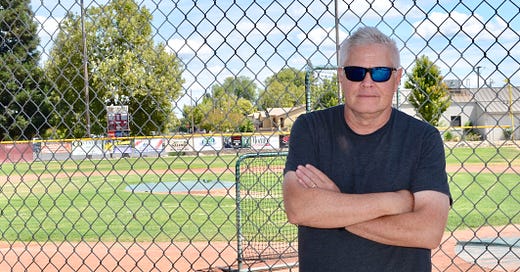


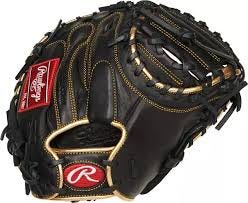


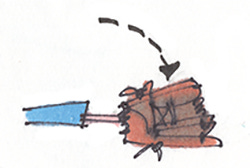

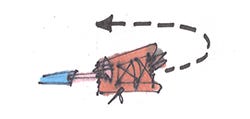
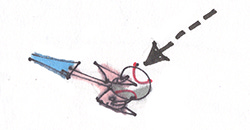
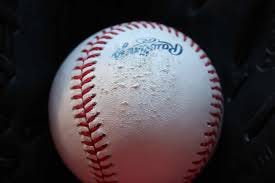
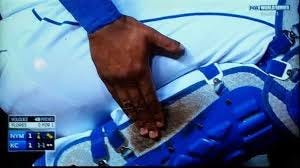

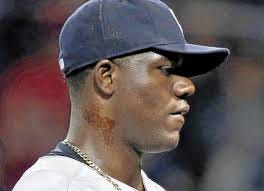

My dad played baseball in the '30s on various barnstorming teams. He said they always had a player designated to load up a back pocket or a shoe with neutral shoe polish. That guy would get the ball, put a slick on it, and get it back to the mound. Shiners were easy to throw, hard to hit.
I want to see a major league groundskeeper put up with a field covered in tiny bits of styrofoam. She'd wish she hadn't survived.
I'd often noticed the pitcher's "wave" prior to throwing a warm-up pitch; thanks for explaining what I was seeing.